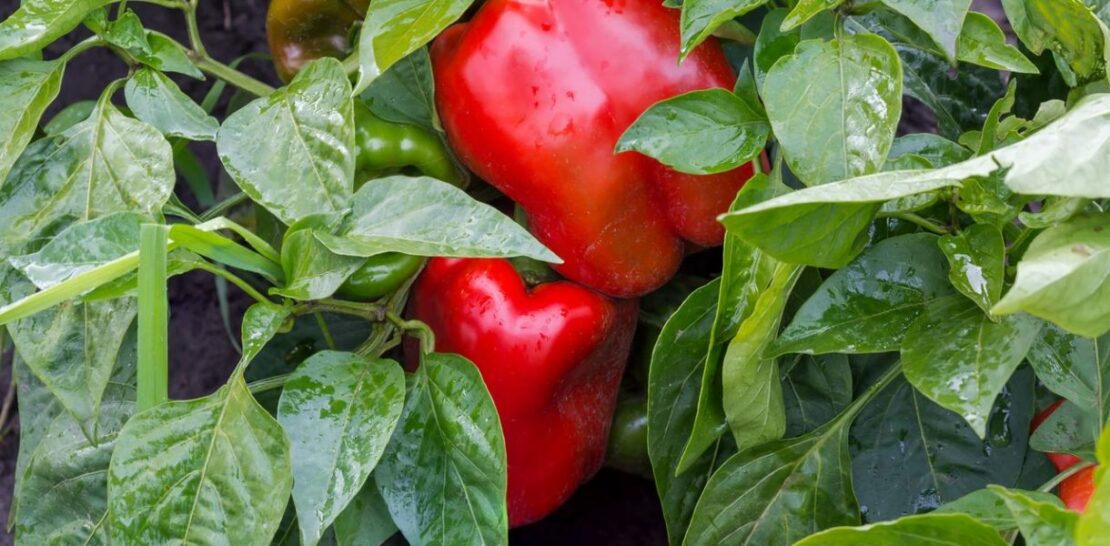Peppers – they add zest, flavor, and spice to our meals, not to mention the health benefits they provide.
For those who want to take their culinary skills and gardening expertise to new heights, growing your own peppers is an exciting venture.
This detailed guide will take you through every aspect of the pepper-growing journey, from selecting the right variety to reaping the rewards of a bountiful harvest.
Allow us to be your trusted source of the best practices and insider tips on growing peppers successfully.
Getting Started: Choosing the Perfect Pepper Variety
First and foremost, it is essential to choose the right variety of pepper to grow in your garden. There are numerous pepper varieties available; each with its distinct characteristics, flavors, and ideal growing conditions.
- Sweet Bell Peppers – These classic favorites are mild in flavor and come in an array of colors, including green, red, yellow, and orange. They are perfect for salads, stuffing, and culinary creations that call for a hint of sweetness.
- Hot Peppers – If you’re a fan of heat and spice, hot peppers are the way to go. Ranging from jalapenos and serranos to the infamous Ghost Pepper and Carolina Reaper, these fiery varieties pack a punch and are perfect for adding heat to your favorite dishes.
- Ornamental Peppers – While these peppers are indeed edible, they are primarily grown for their stunning appearance. With vibrant colors and unique shapes, ornamental peppers make an attractive addition to your garden.
Before making your final decision, consider factors such as your climate, available space, and personal taste preferences. Research which varieties thrive in your specific region; this will greatly increase your chances of a successful harvest.
Soil, Sun, and Space: Providing the Ideal Growing Environment
Once you have chosen your pepper variety, it’s time to create the perfect growing environment. Peppers require specific conditions to flourish, so it is crucial to pay close attention to the following key factors:
- Soil: Peppers require well-draining soil with a pH level between 6.0 and 6.8. Amending the soil with compost or other organic matter can improve drainage and provide essential nutrients for healthy growth.
- Sun: These sun-loving plants require a minimum of 6 to 8 hours of direct sunlight each day. Make sure to choose a location in your garden that receives adequate sun exposure.
- Space: Proper spacing is essential for optimal pepper growth. Plant your peppers 18 to 24 inches apart, allowing ample room for air circulation and growth.
Providing the ideal growing environment will set the foundation for a thriving pepper garden, setting you on the path to a bountiful harvest.
Planting and Nurturing: Cultivating Your Peppers with Care
With your chosen variety and ideal growing environment established, it’s time to dive into the planting process. Whether you are starting your peppers from seeds or transplanting seedlings, here are the essential steps for successful pepper cultivation:
- Start Seeds Indoors: If growing your peppers from seed, begin by starting your seeds indoors 6 to 8 weeks before the last anticipated frost date. This will give them a head start and ensure they are strong enough to be transplanted outdoors. Use a seed-starting mix and maintain a consistent temperature of 70 to 80 degrees Fahrenheit to encourage germination.
- Transplant Seedlings: Once the threat of frost has passed and your seedlings have developed at least two sets of true leaves, it is time to transplant them outdoors. Harden off your seedlings by gradually exposing them to outdoor conditions for a week, then transplant them into your garden, being careful not to disturb the roots.
- Provide Proper Nutrition: Peppers require consistent nutrition to grow and produce fruit. Apply a balanced fertilizer at the time of planting and continue to feed your plants every 4 to 6 weeks throughout the growing season.
- Water Consistently: Keep the soil consistently moist but not waterlogged. Overwatering can lead to diseases and poor fruit production. A general guideline is to provide 1 to 1.5 inches ofwater per week, adjusting for rainfall and other environmental factors.
- Support Your Plants: As your pepper plants grow and begin to produce fruit, they may require additional support. Staking or caging your plants will help prevent branches from breaking under the weight of the peppers and ensure proper air circulation.
- Monitor for Pests and Diseases: Regularly inspect your pepper plants for signs of pests and diseases, such as aphids, whiteflies, and fungal infections. Address any issues promptly with organic or chemical treatments, as needed.
By carefully planting and nurturing your peppers, you will create a strong foundation for a bountiful harvest.
Harvesting and Preserving: Reaping the Rewards of Your Hard Work
After months of anticipation, the moment has finally arrived – it’s time to harvest your peppers! But how do you know when they’re ready, and what’s the best way to preserve your hard-earned bounty? Fear not – we have you covered with the following harvesting and preserving tips:
- Harvest Timing: The ideal time to harvest your peppers depends on the specific variety and your personal taste preferences. In general, peppers can be harvested when they reach their full size and color. However, some hot peppers are picked while still green (such as jalapenos) for a milder flavor, while others are allowed to ripen fully for a more intense heat.
- Harvesting Technique: To harvest your peppers, use a sharp pair of scissors or pruning shears to cut the stem approximately 1/4 inch above the fruit. Avoid pulling or twisting the peppers, as this can damage the plant and reduce future production.
- Preserving Your Harvest: There are several methods for preserving your pepper harvest, depending on the variety and your personal preferences. Some popular preservation methods include:
- Freezing: Peppers can be frozen whole or sliced, making them a convenient addition to future meals. Simply wash, dry, and store your peppers in an airtight container.
- Drying: Drying is an excellent method for preserving hot peppers, as it intensifies their heat and flavor. Peppers can be air-dried, oven-dried, or dehydrated, depending on your equipment and preferences.
- Canning: Canning is a popular method for preserving sweet bell peppers, as well as pickled hot peppers. Follow a tested canning recipe to ensure a safe and delicious final product.
By harvesting and preserving your peppers properly, you can extend the enjoyment of your bountiful harvest throughout the year.
In conclusion, growing a bountiful harvest of peppers is an achievable and rewarding endeavor for both novice and experienced gardeners alike. By carefully selecting the right variety, providing the ideal growing environment, and following best practices for planting, nurturing, and harvesting, you can enjoy the fruits of your labor in the form of vibrant, flavorful peppers. Whether you’re a fan of sweet bell peppers or crave the heat of spicy varieties, this comprehensive guide has provided you with the knowledge and tools necessary to cultivate a successful pepper garden. Now it’s time to roll up your sleeves, get your hands dirty, and unleash the spice of life in your very own garden.




